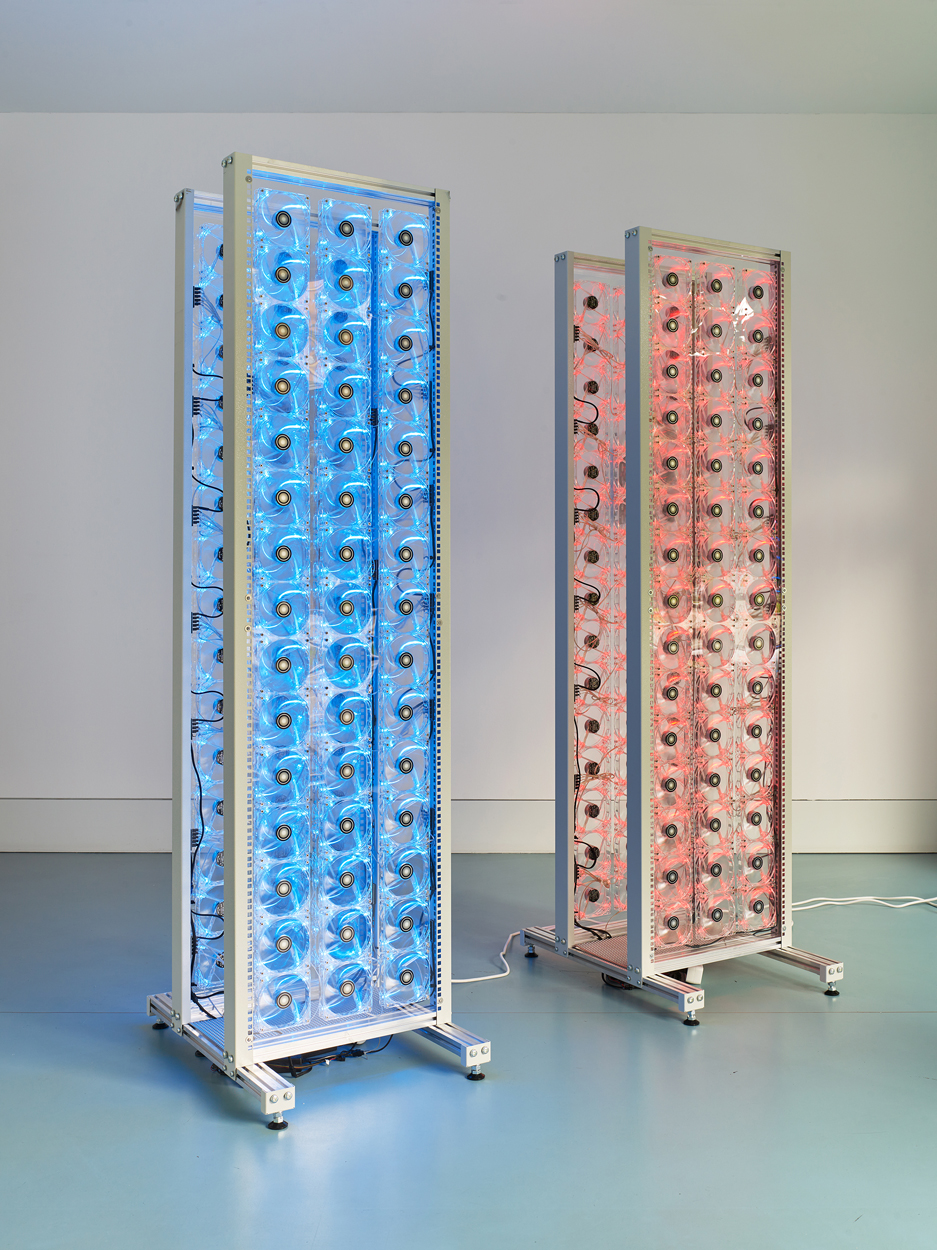
The Freedom to Dream: La Verrière at Fondation d’entreprise Hermès
La Verrière, the exhibition space of the Fondation d’entreprise Hermès in Brussels,…



Trends in living are always changing, and in recent years, there has been a growing shift of people moving away from the modern idea of home. Instead, people are increasingly choosing to take a step back and minimalize the way they live by moving into co-living spaces. But, why? Now, more than ever, we have the world at our fingertips – literally. We can have whatever we want, whenever we want it. We love stuff and it probably comes as no surprise to hear that everything we do, what we wear, how we shop, how we live, is being collected under the umbrella of Big Data to then be used to influence us to buy more. But what does this have to do with a change in living habits? Well, for starters, we cannot continue to consume more than the planet can replenish. Secondly, before we knew it, we found ourselves in a period of economic crisis, inflation, supply shortages and war. Change was inevitable. Change has always been inevitable and amidst all this uncertainty, there came the pressing question – how are we going to change as a society?
BY DESIGN OR DISASTER
Trends in living are always changing, and in recent years, there has been a growing shift of people moving away from the modern idea of home. Instead, people are increasingly choosing to take a step back and minimalize the way they live by moving into co-living spaces. But, why? Now, more than ever, we have the world at our fingertips – literally. We can have whatever we want, whenever we want it. We love stuff and it probably comes as no surprise to hear that everything we do, what we wear, how we shop, how we live, is being collected under the umbrella of Big Data to then be used to influence us to buy more. But what does this have to do with a change in living habits? Well, for starters, we cannot continue to consume more than the planet can replenish. Secondly, before we knew it, we found ourselves in a period of economic crisis, inflation, supply shortages and war. Change was inevitable. Change has always been inevitable and amidst all this uncertainty, there came the pressing question – how are we going to change as a society?
CURRENT CO-LIVING TRENDS
The co-living movement is growing in popularity as more people are searching for alternative ways of living which provide more community and connection. As a result, co-living spaces are popping up everywhere and the best concepts are those that offer the trifecta – flexibility, sustainability and minimalism.
Marc Dunkelman, the author of “The Vanishing Neighbor,” says that people living in cities have lost their sense of community and he seems to not be the only one to think so. Well known co-working giants have multiple co-living subsidiary companies offering bougie housing complexes to those who seek it. Marketed towards digital nomads as a co-living utopia, such urban housing concepts are advertised as a place to be amongst like-minded people and a cure for digital-age loneliness – all without commitment. Co-living utopias entice people with their promise of flexibility and social union – but is that really true? Or is it simply another social experiment? While these corporations might strive to provide a solution to rapid urbanization, people have likened them to expensive student dormitories where the come and go nature of inhabitants fosters an atmosphere that is the antithesis of community. While this might sound scathing, it is a primary example of the capitalistic society people are now seeking to escape. When monetary gain is valued more than the individual or community’s aspirations, what instead forms is division and isolation. Thankfully, there are other co-living trends that are far more interesting than cookie-cutter housing complexes. This is where sustainability and minimalism come into play with flexibility, hence, the trifecta.
When you enter into communal living with others, you are forced to be more mindful of your consumption and how your actions impact those around you. This is especially true for functional shared flats or “funktionale Wohngemeinschaften” in Germany. The basis of this concept is not just that co-habitants share a bathroom and a kitchen – they share everything, and every room has a function. There may be up to ten or twelve people who live in an apartment at one time, where each room is dedicated to a different activity: sleeping, eating, reading, creating, sex, you name it. There is no privacy and everything from food to underpants is shared. This concept is steadily growing in Germany, especially amongst Gen Z, who are looking for more space and freedom in their lives and are open to changing the way they live.
Something that originally started as a niche trend and is now growing in popularity amongst all generations are tiny houses or “small living.” Flooding our Instagram and YouTube feeds with lifestyle inspiration, tiny houses are typically mobile shipping containers on wheels and are considered to be the symbol of a minimalist lifestyle. Often built with sustainability in mind, tiny houses make use of renewable energy sources and waste reduction initiatives, they are designed for functionality with unnecessary wants and excesses removed. When you live in a co-living space, you’re surrounded by people who strive for similar things. In an organic development, communities of micro house dwellers are popping up on blocks of land which house multiple tiny homes where previously there was only one. The movement’s philosophy is built on the idea of being content with having just enough. It poses the question: How might our lives be better with less?
In a world where the burden of living seems to be growing bigger by the day, people are looking for living situations that are as healthy, environmentally friendly and free as they can be. Whatever the driving factors behind it, co-living can no longer be considered only a trend. As our society continues to evolve, co-living is a concept intrinsic to human behavior, it is something that we will always return to. There are many reasons why people are drawn to modern co-living, from the affordability of rent to combating the world’s growing metropolises, but this act of sharing space and resources within a commune all boils down to one thing – belonging.
INDIVIDUALISM AND THE CURE FOR LONELINESS
When living communally, there are usually set boundaries, rules and a collective way of living that everyone shares and follows. Naturally, this idea exists on a spectrum, but it is often thought that a loss of individualism comes with communal living. Right now, the internet, social media, virtual reality and the metaverse are changing the way we live, work and interact with each other minute by minute. People are busier, traveling more, and have less time for longer interactions – our exchanges are digital and calculated. In today’s fast-paced world, it can be easy to feel isolated and alone, all for the price of what we perceive as individuality. However, people have an innate and very powerful need to belong. A sense of belonging is usually dependent upon feelings of connection, membership and acceptance, but now our dependency on technology manifests itself in a need to belong to the status quo. Surrounded every day by a relentless stream of things to buy, download, or manifest in order to be enough, we are becoming less fulfilled by our materialistic possessions and hedonistic lifestyles.
Psychoanalytic theorist Jacques Lacan coined the concept of “objet petit a” – standing for the unattainable object of desire. To roughly unpack this idea, the “objet petit a” is the object of desire which we seek in the other. The other can be anything – for example, we might misplace our desire for happiness or satisfaction onto materialistic objects and buy more stuff. In the age of hyper individualism, we ironically chase that elusive idea of happiness outside of ourselves. We hope someone or some things will bring us fulfillment, yet therein lies the paradox of “objet petit a,” as it is not about the object itself, but our desire for it. So, is co-living modern society’s answer to “objet petit a”? Is it finally time to (literally) let go of the things that are weighing us down? What if all we are searching for, all we need, is within us the entire time? Despite how far we have progressed as a society and how far technology will take is in the future, we are hardwired to belong. What if our understanding of individualism is simply believing we are enough the way we are? Could living more minimally, flexibly, sustainably be a cure for digital-age loneliness? Co-living represents an alternative way of living and revolutionizes the way we think about ourselves, our identities and our homes. The modern co-living movement is currently paving the way for future ways of living together, but is ultimately an unshakeable and subconscious effort to reconnect and return to the roots, find a sense of belonging and “home.”

La Verrière, the exhibition space of the Fondation d’entreprise Hermès in Brussels,…

William Kentridge is a renowned artist from South Africa, using sculpture, drawing or…

Paz de la Huerta presented Sacrifice, her second solo exhibition with Ruttkowski;68 in…